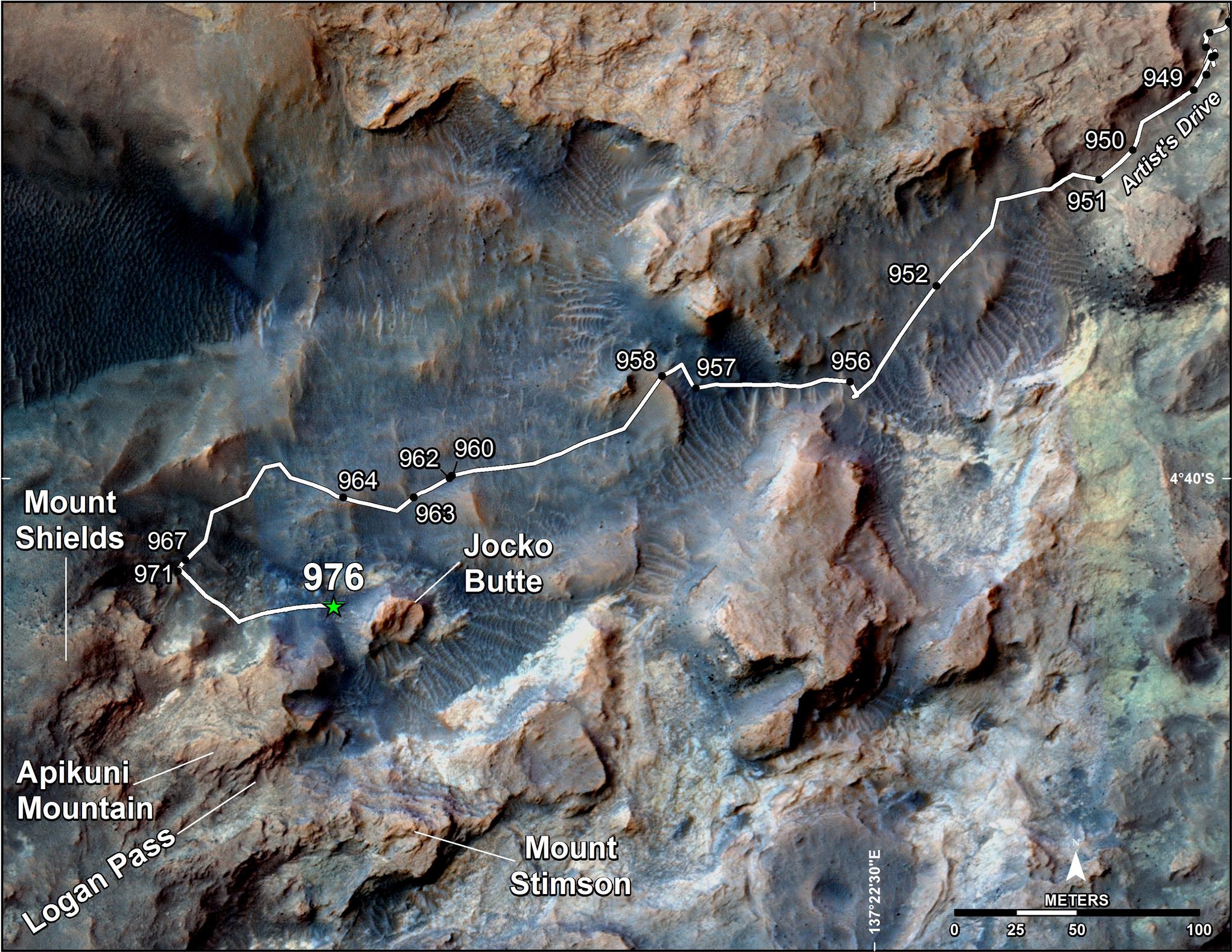NEWS | May 8, 2015
Quick Detour by NASA Mars Rover Checks Ancient Valley

Fast Facts:
-- Detailed new panoramas show hills near and far along Curiosity's route.
-- Rover inspected a site where a valley was cut into bedrock, then refilled.
-- A site of that type had not been seen previously on Mars.
The rover made observations and measurements there to address questions about how the channel formed and filled. Then it resumed driving up Mount Sharp, where the mission is studying the rock layers. The layers reveal chapters in how environmental conditions and the potential to support microbial life changed in Mars' early history.
Two new panoramas of stitched-together telephoto images from Curiosity's Mast Camera (Mastcam) present the increasingly hilly region the rover has been investigating, and more distant portions of Mount Sharp. These large images are online, with pan and zoom controls for exploring them, at:
mars.nasa.gov/msl/multimedia/deepzoom/PIA19397
mars.nasa.gov/msl/multimedia/deepzoom/PIA19398
"In pictures we took on the way from Pahrump Hills toward Logan Pass, some of the geologists on the team noticed a feature that looked like what's called an 'incised valley fill,' which is where a valley has been cut into bedrock and then filled in with other sediment," said Curiosity Project Scientist Ashwin Vasavada of NASA's Jet Propulsion Laboratory, Pasadena, California.
This unusual geometry of the rock layers was noted on the side of a rise called "Mount Shields," which sits northwest of the planned route to Logan Pass. The team chose in late April to divert the rover to the base of Mount Shields.
"We wanted to investigate what cut into the mudstone bedrock, and what process filled it back in," Vasavada said. "The fill material looks like sand. Was the sand transported by wind or by water? What were the relative times for when the mudstone formed, when the valley was cut into it, when the cut was filled in?
"It's exciting to see this on Mars for the first time," he continued. "Features like this on Earth capture evidence of change. What in the environment changed to go from depositing one kind of sediment, to eroding it away in a valley, to then depositing a different kind of sediment? It's a fascinating puzzle that Mars has left for us."
Scientists are examining the evidence collected at Mount Shields as the rover approaches its next study area, at Logan Pass.
JPL, a division of the California Institute of Technology in Pasadena, built the rover and manages the project for NASA's Science Mission Directorate in Washington. For more information about Curiosity, visit:
http://www.nasa.gov/msl
http://mars.nasa.gov/msl/
You can follow the mission on Facebook and Twitter at:
http://www.facebook.com/marscuriosity
http://www.twitter.com/marscuriosity
2015-158
Guy Webster
Jet Propulsion Laboratory, Pasadena, Calif.
818-354-6278
guy.webster@jpl.nasa.gov
Dwayne Brown
NASA Headquarters, Washington
202-358-1726
dwayne.c.brown@nasa.gov



